With the release of the Chord Electronics Blu Mk.2 and recently announced Chord Electronics Hugo M Scaler, I’ve gotten many inquiries about the best digital BNC cables to use. These digital products still sound great with stock cables but, as you’ll see, there are huge gains with a better digital cable. With a more affordable M Scaler on the horizon, I hope this survey will help those looking to maximize the performance of their digital playback system.
What sounds best?
I was curious myself – so I went on a mission. I’ve spent the fast few months gathering and experimenting with a large array of digital coaxial cables (more than 25). I’ve percolated a few cables and came out with an assortment that should cover all palates.
My personal preference prioritizes timbre accuracy, which I would describe as a rawer and less glamorous sound. I would trade transparency, resolution, and soundstage for a more accurate hue and a fuller sound. Your tastes may be different.
The Nordost Valhalla 2 Reference cable used in the Blu Mk.2 review is $3,299 per meter – and you’ll need two. My goal was to also explore more affordable and alternative high-end options.
As you probably know, I’m not one to shy away from cable reviews:
I’ve received plenty of hate mail and condescending comments from those who love to speculate. Others want measurements to somehow quantify emotional response.
Speculating is easy. Doing actual listening, experimenting, and swapping gear around for the sake of curiosity – is something else entirely. As to why someone would spend thousands of dollars on a cable – the “Mind Your Own Business” principle works wonders – both in audio and in life. If a grown-ass adult has the cash to blow on a cable and she feels it gives her an eargasm – your opinion doesn’t matter. She doesn’t need saving.
Some claim cable reviews are rubbish because they’re system dependent. Well, I went ahead and tested these cables on different systems. I swapped out power conditioners, DACs, cables, amplifiers, and even speakers. These BNC cables were also tested on both Mutec REF10 and SOtM sCLK-OCX10 master clocks (reviews coming). My notes for each cable were written in separate documents over the course of a few months and were joined at the end. I wasn’t aware of the pricing on most of these cables until writing this review. Expensive doesn’t mean it sounds better and I prefer not to know the price ahead of time anyway.
None of these cables are perfect and they’ll all have tradeoffs. Some are going to be grainier but have better tonality while others will be smoother with a more porcelain tone. I’ll try to describe them in a way where you could decide for yourself what’s best for your system.
Procedure
Given the number of cables on hand, you could imagine the number of comparisons that had to be done. If I found a group of cables that performed similarly, I’ll grab the cheapest one from that group and move onto other flavors.
Quick back-to-back comparisons seem like the most effective way to outline some of the finer differences between cables (focus, tone, quietness, etc). But spending days with a cable helps you get a holistic impression of how a cable sounds over different days, genres, moods, and systems (tempo, pitch, cohesion, extension, etc).
In the end, I just had to put in the listening hours and write down notes. Grouping cables with a similar tone also helped isolate differences. Luckily I had all the cables on hand for the entire review so swapping in and out was quick and easy. Once all notes have been written, they’re combined for consistency checking. The results are more predictable than you would think, even across different systems.
Setup
The testing for many of these cables was done over a few months on a variety of setups. I’ve used different speakers, power cords, DACs, etc to evaluate performance across different systems.
- DAC
- Chord Qutest
- Chord DAVE
- BNC 3 & 4 seem to sound better when connected to the Blu2. BluDAVE offers a richer sound over the DAVE alone.
- If you clip on a few ferrites, connect them at the DAVE’s end.
- Chord Blu Mk.2
- Some have mentioned having the upsampling rate at the halfway point trades resolution (and taps) for warmth. I’ve found this to be the case as well.
- Prism Audio CALLIA
- Server
- Innuos Zenith Mk.2 SE
- Roon
- Amplifier / Preamp
- PS Audio Sprout100 as preamplifier
- First Watt J2
- NuForce STA200
- Chord TToby
- Speakers
- ATC SCM7
- Omega Compact Alnico Monitors
- CSS P215
- Audience ClairAudient 1+1 V2
- Power Cords
- Zenwave Furutech DPS-4
- Zenwave PL
- Vovox Textura
- High Fidelity Cables CT-1U
- High Fidelity Cables Reveal
- Audience Au24 SX
The Cables
Welcome to the candy shop! There’s something for everyone. 🙂
- Monoprice – $2.35/6ft
- Requisite Audio D3r – $55.00/3ft
- Audio Art cable D-1SE – $360/2m
- High Fidelity Cables Reveal BNC – $399.00/msn
- Snake River Audio Boomslang – $595.00/1.37m
- Danacable PureStream – $599.00/m
- SOtM dCBL-BNC75 – $700/m
- Clearer Audio Silver Silver-line Optimus Reference – $1,000/m (Oyaide connectors)
- WAVE High Fidelity STORM Reference – ~$1,060/m, $2,125 for two 1m cables.
- Synergistic Research Galileo UEF BNC – $2,995/m
- Ansuz Acoustics Digitalz C2 – $3,000/m


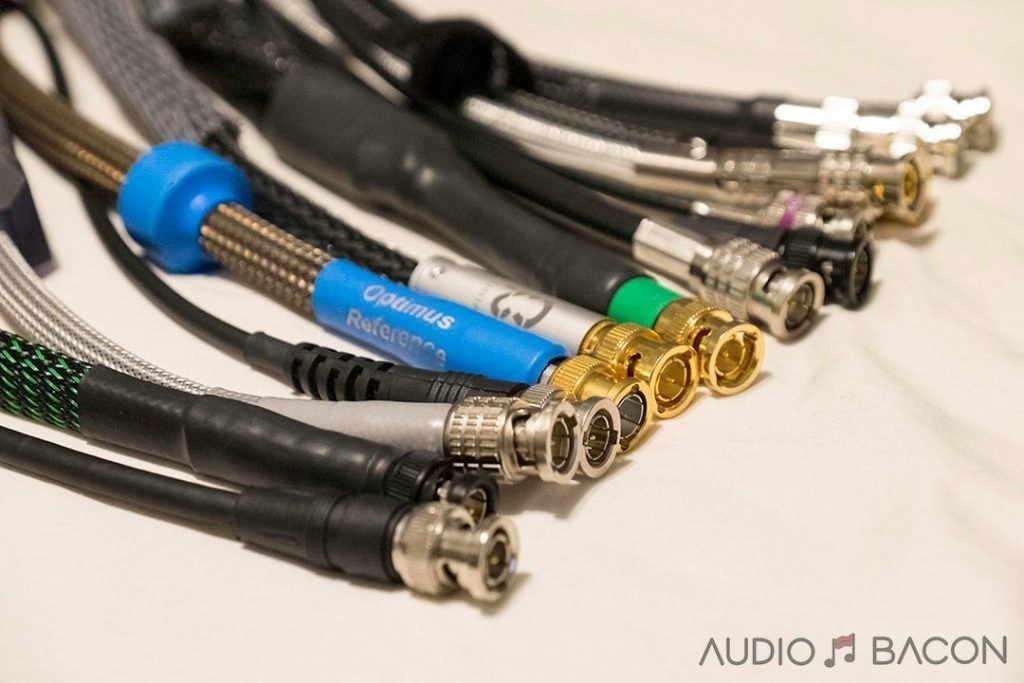
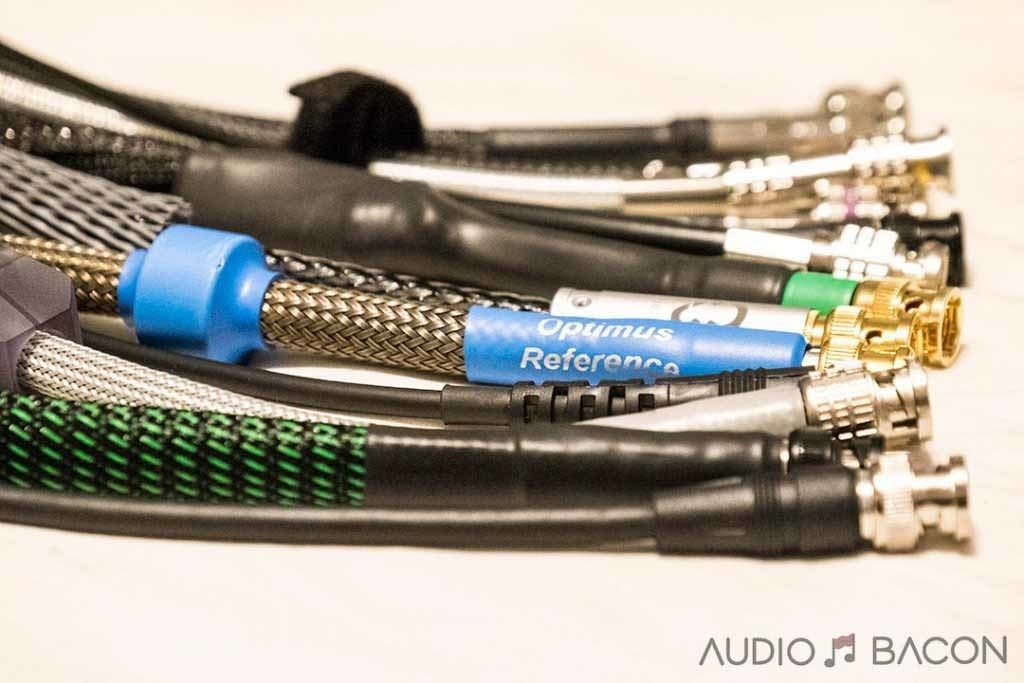
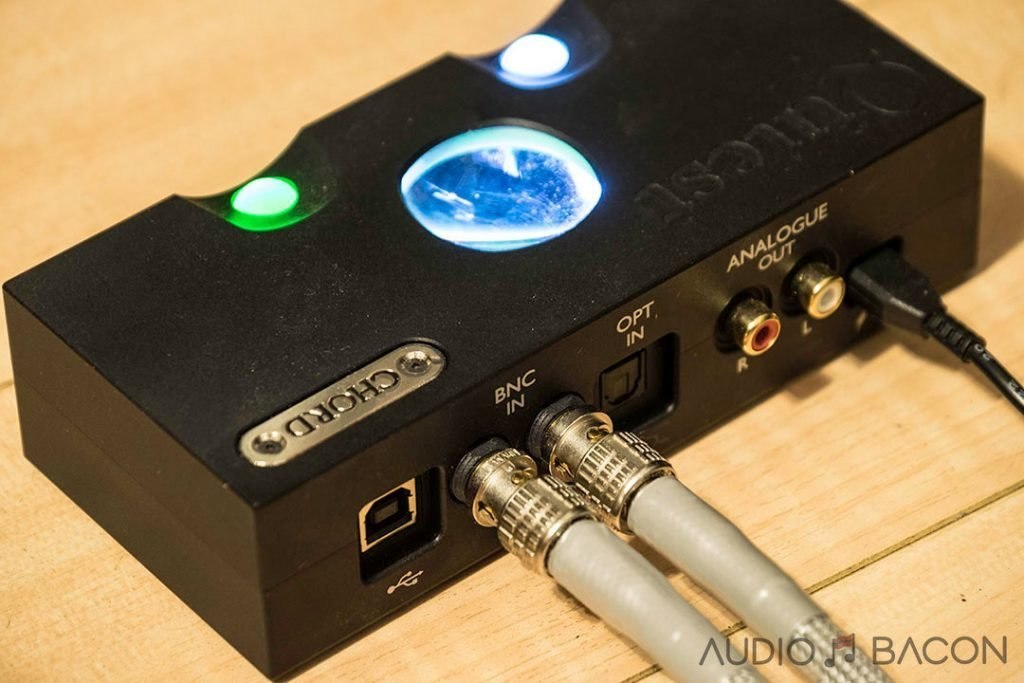
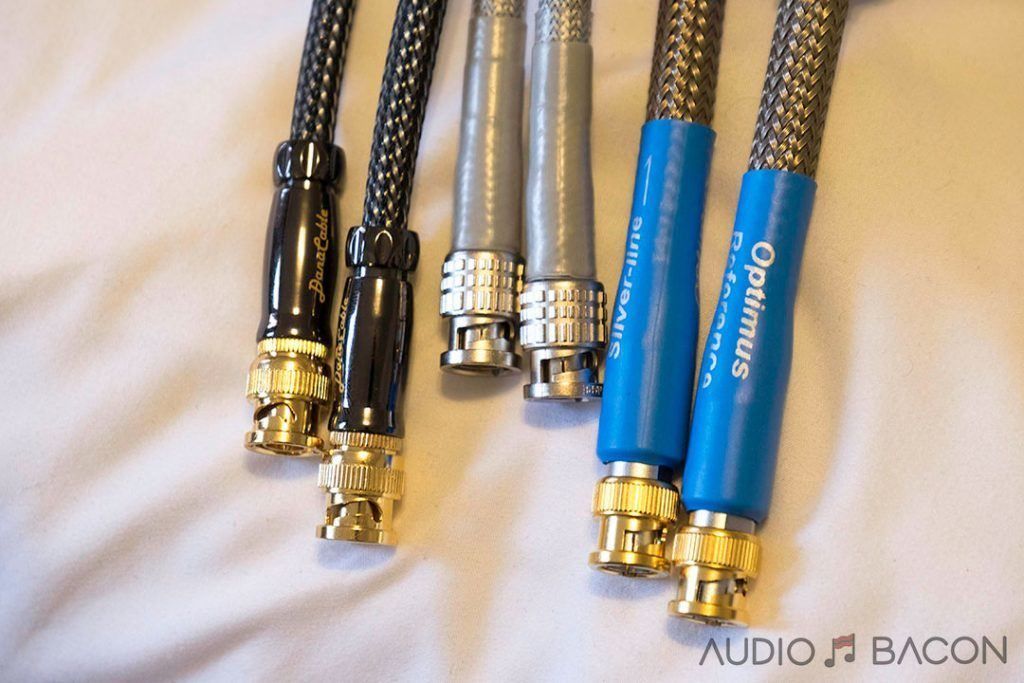
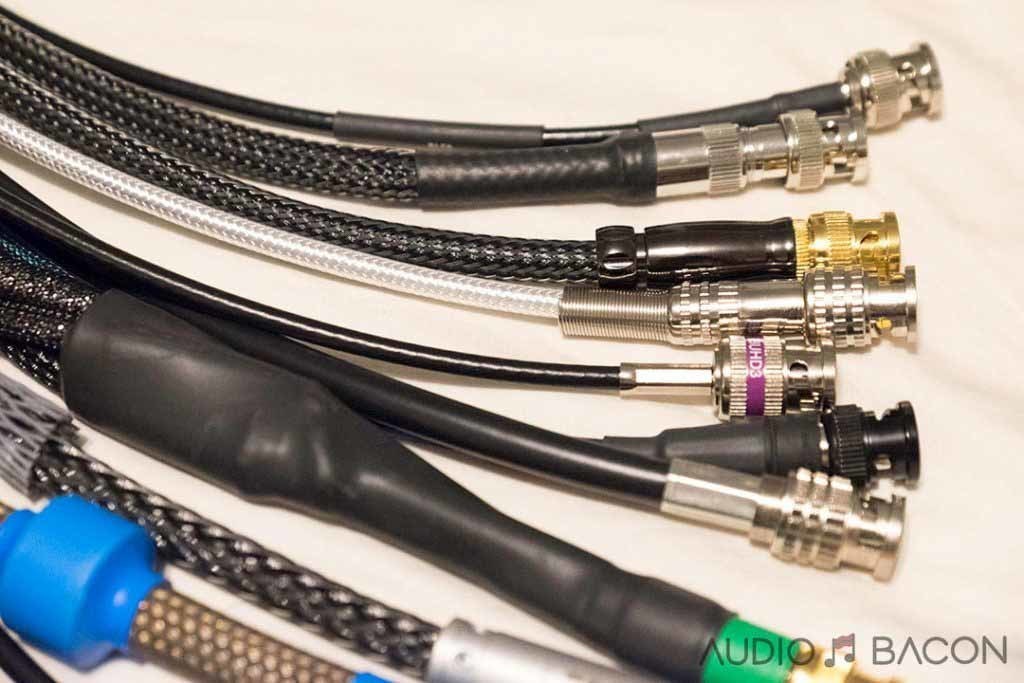


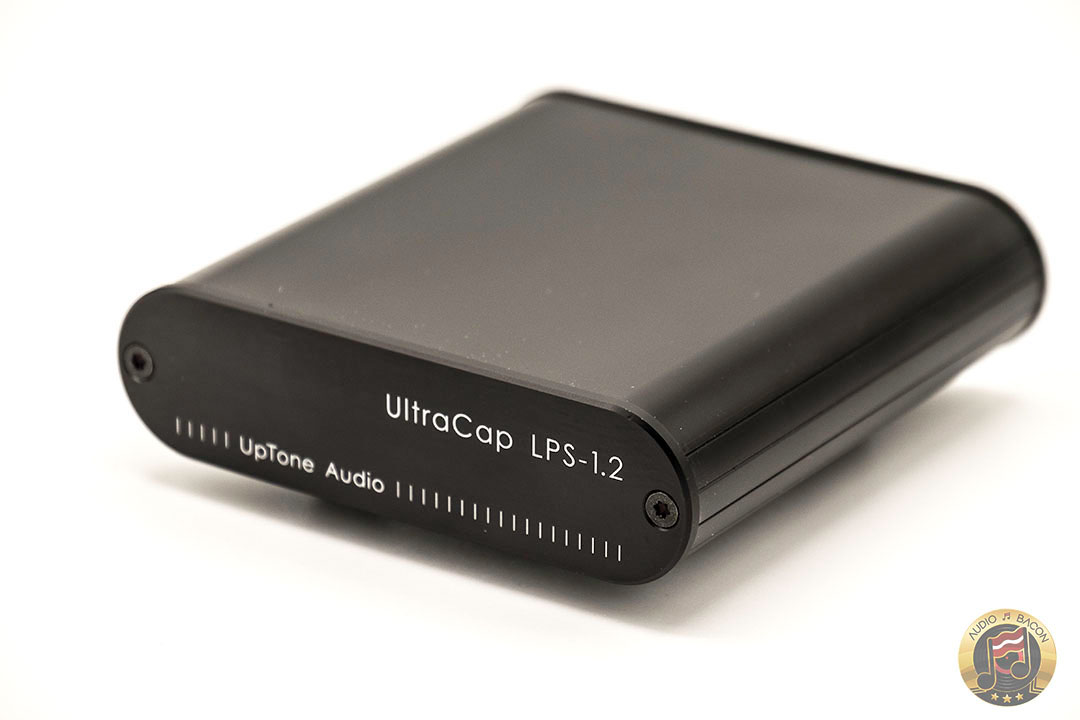

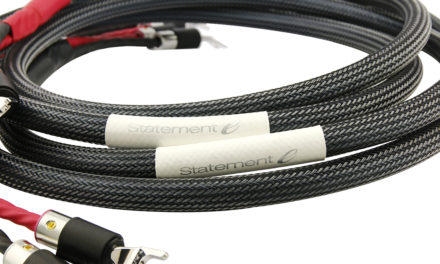
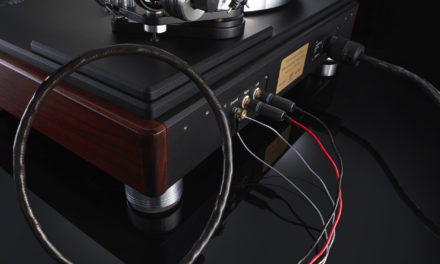

Herculean effort there Jay commensurate with self -flagellation. Not too many people would tackle something like this. Well done.
Thank you, Frank 🙂
Hi Jay,
I read a lot of your very detailed and helpful reviews. Very much appreciate your efforts which often offers very helpful insights.
Did you ever test the oyaide db510 which was proposed to me by a friend?
I have mutec ref 10 with Sotm trifecta and uptone isoregen as well as uptone etherregen.
I also have questions regarding usb and power cable.
Regards
Olaf
Thank you for your fascinating survey. This is a whole lot of audiophile goodness – a detailed discussion of cable sound – not only cable sound, but digital cable sound! Numerous times over the years I have been “informed” by scientific types and narrow minded types that digital cables cannot possibly make any difference. I’ve pointed out that you can change the digital cable sound by putting things on the outside of the cable – a ferrite choke (not so good), a Shun Mook cable Jacket (wonderful). You can often improve the sound of a given cable with mechanical damping as well.
I’ve used many digital cables over the past 25 years and have built several. Despite my best efforts, I was unable to build anything that could match even a $100 audiophile brand cable. I’ve made cables which DIYers claim beat everything on the market.
I noticed that Monoprice has a cable made with the superior RG-6 (vs the RG-59) which is just a few dollars more. That one might be worth trying.
I currently use a Stereovox SPDIF TO my modified Monarchy jitterbug and a Harmonic Tech FROM the jitterbug, which is the best I have here and works well for me. I use these cables with Bybee plugs (running the digital signal through a Bybee filter) and Shun Mook Cable Jackets.
Cybershaft makes a very inexpensive option. only around $30 each plus shipping. Would love to hear your thoughts.http://www.cybershaft.jp/option01/option_bnc1.html
“Some are grainier but have better tonality while others will be smoother with a more porcelain tone.” You cannot increase gain with a coax cable. You can minimize signal loss. As for tonality,, if we are talking about digital AES signals tonality doesn’t even come into play. The coax cable is simply transmitting a digital signal from one point to another. These cables only have to meet the basic requirements of AES transmission. Remember that in a digital signal the information is either there or it’s not there. Sure if you buy some total garbage Chinese cable there’s a chance that it may not meet the basic specifications required for transmission. Also if the cable is on a particularly long run you may have to go with a larger cable. In the broadcast world we use RG6 in these scenarios. If we are talking about the cables ability to transmit a Broadband signal, yes some are going to be better than others. Of course this means going Beyond the specifications required. I would love to see these cables tested out on a spectrum analyzer with actual scientific results. In this case I would expect that some of the higher-end cables would be capable of higher bandwidth transmission exceeding their specifications. But that will be the only difference.
Another ignorant comment from someone who chooses to listen with a scope as opposed to their own ears. Feel free to go back into your cave and don’t bother coming out. Your tired theories are not welcome here.
Rob,
James G. made several claims. Instead of getting upset and telling him to go into a cave for a while, could you clarify which of the following were made from a place of ignorance, or why they are tired theories?
1- You cannot increase gain with a coax cable.
2- The coax cable is simply transmitting a digital signal from one point to another
3- In a digital signal the information is either there or it’s not there, (1 or 0 has no tonal coloring possible)
4- Cables that have high broadband and adequate broadband still transmit the same digital signal. The only cables that mathematically will be different are ones under spec.
The whole point of why digital has transformed the information transfer in the world is it takes away any coloring from “shades of grey” that was inherent in analog. This is not even an “which sounds better analog vs digital” or “which DACs sounds warmer”, or “which type of driver reproduces the sound the bass the best.” Those are arguably much harder to test difference. Since we are in the digital black and white realm It is as simple as did the 1010111010010 that was transmitted equal the same 1010111010010 when it was received.
Frankie,
This is not about ones and noughts. Specifically with the dual BNC connectors between the Chord Blu Mk2 MScaler and the Dave DAC it is about using the cables to filter out RF common mode noise produced by the MScaler. The Blu Mk2 MScaler and Dave are awesome with just standard BNC cables but when the RF noise is removed it really produces the ‘icing on the cake’.
My WAVE STORM Reference cables remove all the RF noise and the resulting darkness and depth of sound is so obvious that can be almost too much for some listeners who crave the false detail and shimmer produced by the RF noise. Hence I think the comments in the review where some slightly brighter cables are preferred but what you get with my cables is 100% of the digital signal and nothing else. If the sound is too dark then that is because that is on the master tape. Keep listening and the ear / brain will adjust and reveal the true fine detail which was being masked by the RF noise.
Many other devices have RF noise and that is why cables which filter the RF are so beneficial within a system, not only between Blu Mk2 / Dave but also elsewhere.
Frankie, they are tired theories and remarks because they are useless. We still have to listen to the cables before we choose.
Does anyone disagree that subjective individual assessments are less consistent and reliable than repeatable scientific measurements of the same information? I’d like someone to try to convince me that this is untrue.
Two cables could measure nearly the same – and have a completely different sound.
James’s comment was filled with facts, science. Your response is some audiophile religious faith, and insult. If anyone should go back to a cave it is you Rob.
James, I hope you are the chosen one to prove your prediction. Especially considering how much you would like to see the results.
Have you ever done a comparison on different brands of green magic markers?
You’re a dick!
Thanks so much for the comprehensive review Jay, I certainly found it very helpful.
And one last thing, ignore ’em haters.
Jay,
You have completed a huge task which I have never even seen attempted by anyone else. Well done.
Obviously I am pleased that you and your fellow listeners liked our Storm Reference BNC cables but my take on any supposed missing ‘sparkle’ is that the sparkle referred to is being generated by RF noise. In the process of developing the cables I initially removed some of the ferrites and did indeed get back some of that sparkle or shimmer. After extended listening I realised that I was fooling myself and that it was false detail in the music. So I reverted back to the current version of the cables which suck out as much RF noise as they can find. Remember that we are not altering any of the original digital music signal here so the production version of the WAVE cables must be truer to the music encoded in the digital signal ie without the RF. If that signal lacks sparkle or shimmer then that is what you will hear with the WAVE cables. However, and remember that I listen to these cables for up to 10 hours per day, every day, I prefer the fine detail in the top end that is left after the artificial shimmer or sparkle of the RF noise is removed.
I am not surpised that your listening experience with the WAVE cables resulted in what you say. Indeed it is a welcome and very accurate summary of what I hear myself but hopefully you will appreciate that it is intended and I have no intention of altering the cables because that would reintroduce the very RF noise that I have been to careful to keep out of any downstream digital to analogue devices.
Have a rest, you deserve it.
kind regards, Nick.
It will be interesting to see also the review of Habst cable comparing to the high-end cables here.
Thanks for the great review and the amount of time and effort you put into this review. I would like to see two more affordable cables evaluated. They are the UIT SPDIF cable and the Moon Audio Silver Dragon MKII SPDIF cable.
I would now like to address some comments.
I certainly can understand a person having difficulty relating to sonic differences in cables when there are no measurements to back it up. I still have difficulty wrapping my head around the idea that ab 8 inch piece of Curious USB cable makes such a difference compared to the free on I got from Chord Electronics with my Mojo DAC. I’ve done blind listening tests with friends and they can tell the difference. I liked the cable and don’t regret my purchase.
A few years back I was reading one of Paul’s Post,s written by Paul McGowan of PS Audio. Paul was talking about how PS Audio had stated that the PS Audio Directstream DAC was immune to differences in properly designed USB cables. Ted Smith, the designer of the Directstream DAC (No dummy himself) concurred. McGowan then writes, “Along comes this JCAT cable.” He then went on to elaborate the improvements the JCAT cable made in the PS audio reference system. He said that it drove him crazy, because from an Engineering standpoint, it shouldn’t be so. I’ve been to PS Audio in Boulder, CO, and they have more than a spectrum analyzer at their disposal. I don’t believe that Paul McGowan or Ted Smith ever came up with any measurement to back up what they were hearing. PS Audio does not sell JCAT cables, and has no reason whatsoever to endorse the JCAT product. They just had to eat their words about their DAC being immune to differences in properly designed USB cables. They showed great integrity in doing so.
SPDIF cables and USB Cables (when used in computer audio) are one way devices. There is no error checking for packets, or re-sent packets like there is with downloads or when you send a document to a printer.
Bkuhuna, CD Stoplight is meant to be used on CDs, not cables. An old, modestly effective treatment edge treatment for CDs. Not a knockout.
Another story. The late Julian Hirsch, the father of audio equipment testing, once measured a Mark Levinson amp, preamp, and special cables. He was a strict by the measurements guy, and very respected. He did not use any of the audio vocabulary invented by Harry Pearson. Julian Hirsch concluded his review by stating that he heard a “Gold Plated Sound” he could not explain with measurements, but he also could not deny. This was the first an only time he made such a statement. Julian Hirsch was a man of great integrity.
Measurements are important, and do explain some of the audible differences in components. Unfortunately some things are not measurable at this time. Transient Intermodulation Distortion was once unknown. Proponents of Harmonic Distortion measurements claimed that their measurements proved that the listening fatigue amplifier owners complained of had no basis in fact.
There are today, still proponents of THD measurements , who use them to prove there are no sonic differences between components . John Curl and Matti Otala invented the TIM measurement. It proved that some amplifiers with excellent THD and IM distortion measurements exhibited high levels of TIM distortion. The amplifier owners complaints of harshness and listening fatigue was not a figment of their imagination after all. The Human ear prevailed. This changed amplifier design, to include sufficient slew rate and avoiding over use of negative feedback. The human ear is more sophisticated than some people give it credit for.
I have a recommendation for Bkhuna and Mr. Greer. The Audio Science Review Forum would be a much better group for individuals who are measurements only minded. They will be glad to have you join their discussions. I think you will enjoy it.
I’ll try to get those cables in. Thank you for the recs.
I’m probably one of the few reviewers with a BS in EE and have probably measured more in my lifetime than most speculators. I initially called for measurements but it became very obvious that it’ll be more prudent to listen first – and measure later. Find equipment you enjoy. Look up measurements. Then, if it matters to you, find how out those measurements correleates to your emotional enjoyment. The complexity of how we hear are still being studied (Laurel vs Yanny) and I have a feeling we have lot more to learn.
I need 5 BNC terminated 75 ohm cables to carry clock signals from an external clock to my digital stack. Which of these cables would you recommend for clock signals, i.e., which is the most accurate?
I’ll go over this in my upcoming master clock reviews. I tried all of these cables on a Mutec REF10 and SOtM sCLK-OCX10. In short, you still get the same “character” of each cable in the signal path along with tighter focus and a lighter tone (imparted by the clock). Interestingly enough, the clock cables matter much more than the power cord on the clock. Anyway, I’ll go in more depth later.
Great review. Sticks it to the cable deniers.
A very comprehensive review Jay. Good to see a wide range of prices involved. If only you had included the Habst cable then it would have been perfect 🙂
What do you mean by the term “raw”?
The other thing I couldn’t work out is why no award fot the Art Audio cable? You seemed to really like it, with the comment about bloom and reduced treble may fit the bill for some tastes. And it costs less than the Fidelity Cables which did get an award. So what am I missing?
I’ll try to get a Habst cable in.
The HFC has a little bit of everything and I feel it’ll please most palates. The Audio Art’s more liquid top-to-bottom sound will appeal to ears looking for that kind of sound.
I came up with “raw” after listening to so many cables. It just means less smoothing, less glamor, and more truer color. It’s similar to what we see with anti-aliasing in image processing: https://i.kinja-img.com/gawker-media/image/upload/t_original/18j12dpqvbzb7jpg.jpg
Although the anti-aliased image is easier on the eyes, I prefer the original, more truthful image.
Oh the level of ignorance here is beyond words.
The audiophile just does not understand digital – theory, transmission, processing.
This comparison test is a heap of false notions of what is going on …an echo chamber of delusion
OMG people …digital music is perfect. From Google’s servers across a continent of wires and switches to your music streamer and then another few feet to your DAC. All the digital coax cables being tested deliver the bits perfectly to the DAC. There is no nuance in the cable’s design or quality that makes the bits ‘better’. They all work equally well as digital cables …the SPDIF industry standards and manufacturing testing assures that.
Where Digital COAX cables differ is in how much analog RF noise they allow to pass from the streamer to the DAC. This is their primary flaw …and, in fact, the primary flaw of digtal-to-audio playback design: that the conduction of RF noise through metal connectors is the invisible culprit for sound quality. Jitter is irrelevant today – resolved by better clocks and adaptive circuits. Its all about the analog RF noise: DACs rely on a rock-steady reference voltage to modulate …and damn it, our ear/brain hears the smallest modulations. All that RF noise crawling thru cables, around isolation and past grounding gets to the innards of the D/A circuit. Its the frequency and amount of noise that cables allow to pass that produces the audible variations in the sound. We dont believe that a system costing many thousands of dollars is still subject to old-school analog noise problems …but it is.
What I object to in this review is the quantification of the merits of one cable over the other …when their tasked job to transmit bits is fully satisfied and so they should all win! However as they are all transmitters of RF noise, Jay has determined the best of the worst. Readers can consider this a hollow victory and call to purchase or, like me, realize that digital COAX will never be without flaw as a DAC interface. I’ve moved to optical TOSLINK – with guaranteed RF noise free transmission and although SPDIF optical may not get up to ultra-high bit rates, it does do 24/192 with modern interface components. And I can sleep well knowing that my system sounds its absolute best and there is no ‘better’ cable waiting for me.
If RF noise is the only reason for the differences in sound quality between coaxial cables, then I am curious how you explain the differences in sound between different optical cables ?
I would like to know as well. 🙂
Connect it to a scope? S/PDIF is PLL locked to the source clock, so you may have jitter induced from the source, or jitter contracted in the cable and/or terminators. And yes, jitter can be very audible.
It is rare to actually lose bits with short runs of cable -though it can happen- and that would probably manifest as a click or pop rather than a subtle difference. If many bits are lost you have a broken machine or broken cable.
The S/PDIF protocol is very simple and resilient: the next bit to be sent always starts as the inverse of the previous, making “best guess”single bit error correction possible.
Maybe there are differences because of different levels of jitter introduced by the cables, maybe for the mechanical fit of the connectors, or maybe the differences are much smaller than in spdif due to the lack of RF noise.
Anyway, the main points of the previous post are right. In digital bits are bits, if that was not the case the PC even would not boot some mornings. Then, assuming audio is subjected to the same physical laws as the rest of electronics the only option left for cable differences are differences in voltage. These can be induced by the reasons discussed above.
I came to the same conclusion, that optical is the way to go, but found further improvement using a glass Toslink cable. Definitely a step up from the silver Furutech cable I was using. However, the optical transmitters / receivers are of varying quality and I found with both Toslink and RCA a certain upper-mid glare to the sound.
Looking around at reviews I stumbled across the Boomslang cable from Snake River Audio, which I subsequently bought and which is vastly (repeat – vastly) superior in every respect. So much better than the glass optical cable!
There’s no question of my being fooled by euphonic or other effects. I’ve spent my entire life as a solo woodwind player in professional symphony orchestras, and there’s no doubt when I hear a more realistic sound. Being a member of an orchestra – equivalent of your 9 to 5 day job – for over 40 years, I know how it’s supposed to sound!
Jay, thanks for your incredible efforts in this review, they’re really appreciated. One question, how does the Valhalla 2 compare with these cables?
I didn’t have the Valhalla 2 on hand for this review so can’t really say.
Are these all 75 ohm cables?
If you comment on the sound for some of the cables when directionality is changed, you should do so for all of the cables… or simply state if you hear a significant difference or don’t hear a difference. If no more description is warranted, say so.
It cannot be undetrstated how important summation of the system can change the resulting sound. These or those BNC cables in my system vs your system are Not going to yield the same product, so I have a hard time putting too much weight into such a review.
With that said, Nice job though. Based on your current setup, you’ve come to some very strong opinions, but have you had other audiophiles giving them a listen and are they coming to similar conclusions?
Precision and accuracy are at play here.
Hey Adam. Yes, they’re all 75 ohm. You’re right. The only one where I heard a significant difference was the Boomslang. The Storm Reference was more subtle and the others were neglible. Those with filter blocks (SR, SOtM, Ansuz) sounded much better in the designated direction.
What I’ve realized is that people hear and describe sound a little differently, especially during some of my blind tests with groups. The only way was to listen over time on multiple systems (hence months worth of notes). As mentioned, I tried multiple setups. I’ve changed out DACs, clocks, power conditioners, and even outlets during this review. As mentioned, the sound of the these cables were relatively consistent.
Just this past weekend, a buddy visiting from the bay area wanted to check out some speakers. I wanted to gauge what he’d like. But swapping in and out speakers is a bit of a pain. He isn’t a die-hard audiophile and was firmly in the camp that digital cables didn’t matter. He also didn’t know the prices. I told him I would just swap a few cables around (WAVE, SOtM, and Snake River) with the ATC SCM7s and had him tell me what he liked the most. I noted his response.
SOtM: Very clear, I could hear where the singers and drummers are. I love the detail.
Snake: Sounds a little heavier and less detailed and clearer from the SOtM but more of a head-bobber
Wave: More closer to me and less detailed than the other two. I can’t tell exactly where the guitarist and drummer are as clearly but you could feel the bass more.
In the end he was amazed these cables could change the sound so dramatically. When I told them they were digital, he was dumbfounded…but became a believer.
FWIW, in the end, he preferred to have the transparency and resolution of the SOtM.
Wow, there’s nothing like politics, religion, or the sound of cables to jump start a dialogue, LOL
Massive thanks for this very thorough and incredibly useful review. I haven’t come across any BNC cable reviews that come close to the breadth and depth you covered. It came at just the right time for me. I already had the SOtM 50ohm BNC cables from the SOtM clock to other SOtM trifecta components, and based on your review added the SOtM 75ohm BNCs from Blu 2 to the Dave. The difference was immediate (everyone who has heard the new cables could hear an improvement). Less haze, much better micro dynamics, less annoying treble harshness, and most of all more ‘music’. But tonight (around two weeks after receiving them), something changed dramatically – this huge deep, but very clean and controlled, bass just appeared out of nowhere. I’ve never heard it in my system before. It’s addictive and I can’t believe this quality is coming from streaming Tidal (through Roon). It might be compounded by the recent neo upgrade, but it’s also there when I play CDs on the Blu 2, bypassing the neo. Whatever is causing it, it’s putting a huge smile on my face and going some way to justifying this crazy expensive hobby to my girlfriend.
An unrelated upgrade I recently (and very reluctantly) made was adding still points ultra 6s under my amp. The improvement is uncanny. If you haven’t already, I would definitely take a look.
Many thanks for this very thoughtful and well carried out review. I happened across it while looking for audiophile quality coax cables for a short wall to broadband cable box run. I happen to have an inclination for a somewhat warmer, tonally and timbrally accurate sound than what’s commonly called neutral. That’s perhaps why I’ve stuck with a Boomslang for so long. Haven’t tried reversing direction, though what you describe is something I’ve come across in reversing direction of other cables and fuses. I suspect that one coaxial cable which could get me to shift is the Purist Neptune, which unfortunately didn’t make your review. I heard its cheaper relative and found it going in the right direction for my tastes.
As a follow up, I decided to try switching the Boomslang’s direction and letting it run all night before a listen. The audio of my system is highly modded Oppo 203 to DirectStream dac to ATC SCM19A speakers. Listening with the Boomslang reversed brings that degree of warmth I’ve been hoping to retrieve (since the modded Oppo returned). However, the soundstage is moved back considerably, which gives the sense of slightly lower volume and constrained dynamics and staging. There might also be a touch of edginess, but I’ll have to listen some more for that. I should add that my Boomslang’s are RCA connectors, which as I seem to read are not as good SQ as BNC. That true?
I mentioned the Purist Audio Neptune coax. Reading through your site, I came across a cable article that mentions that the PA in your testing sounded a little thin (vs. properly dense). That’s how the lower level PA coax I tried came across. The Neptune is said to be lush, at least in the sense of warmth, but I wonder if that thinness is a house characteristic.
Great test as always!
I think you missed out the very best BNC cable of them all in the test , and that is the
MIT Oracle MA-X 75 Ohm BNC with the passive artikulation system where you can fine tune the sound/ Tone / resolution / warmth etc in 6 steps for the ultimate synergy for your system.
So it would be very interesting to hear what you think about the Oracle MA-X , if you got the possibility to borrow it and throw it in and see how it compare.
🙏🏻
Then it would also had been great if you had tested the popular
Oyaide 5N Solid core DB-510 BNC
// Fredrik
Quite detailed and fine comparison!
I have access to a Audio Arts cable – with BNC connectors.
I was planning on using a Blusound Node2i streamer/DAC and bypassing to a CHORD Qutest.
The node does not have a BNC out connection. What’s your advice??
I assume you listened to the BNC cables that are included with the Blu2 /HMS but you have not mentioned them in your terrific review. I would appreciate it if you would add your impressions of the included cables to help us make an informed choice about whether or not to change cables or to use those included in the purchase. Thank you.
The Golden Ears crowd deserves to be ripped off. The way you guys act. Thanks for the money. I’ve been wrapping import cable in fancy sheathing for years and you all have heard the sound difference, paid handsomely and I thank you. Of course you’ll attack me about my ignorance, which is great as when you plunk down 3k to feel better on a coax cable, I can upgrade my kitchen. Dont forget to buy some blocks of maple and a tin foil hat to match. I dont sell the tin foil hat but if I rubbed it in Luxembourg cat pee it just might be something to add to my catalog. Offer the dealers 50% of all profits and they will push it like the wall outlets.
Hi Jay.
Just going over this teview again now that I have a pair of WAVE Storm and WAVE stream cables to compare with my Clearer Audio cables I found myself wondering what cross-feed setting you were using with the DAVE. Did it stay constant or did you vary for best result with each cable?
What are your thoughts on the Storm vs Stream? I have to say, I’m really enjoying the Stream. Crossfeed 0 for speakers Crossfeed 3 for headphones.
Hi Jay. Sorry for the delay in responding. Struggling over my preference with Storm or Stream with my M Scaler. Sometimes the Storm sounds slightly too dark, which is helped by turning DAVE crossfeed down to 2. Sometimes Stream is a little too open but does often sound like it has a slightly more natural openness and tone, with classical music in particular. The ideal for me is probably somewhere between the two. I think I will go for the Stream at this point in time. Just to finish by saying I listen only with headphones, with the Focal Utopia my normal go to (often using Prion4).
You forgot the Black Cat Tron. Can’t have a digital coax cable comparison without it.
It’s absolutely amazing and will change what you think a digital cable is capable of.
After I upgraded to it, I realized I was only getting 60 percent of the performance of my DAC with the previous digital cable.
It will blow you away when you find out what you’re missing with the Chord setup.
Most people have swapped DACs without even knowing what their DAC was capable of.
Black Cat didn’t want to send a cable in at that time.
Compared the Requisite D3r with the 179.00 EUR for one meter AQVOX EXCEL coax cable that I had been using. The AQVOX sounds far better and is well worth the extra cost in my estimation with my budget Modi Multibit and Eitr desktop PC rig with Sennheiser HD800 and Sony MDRZ7M2 headphones and a Woo WA6SE amp.
Good to know!
Has anybody tried the Audience AU24sx BNC cables? I know you have reviewed the full loom of AU24 cables, but I can’t find any reviews on the BNC cables.
We have not. Perhaps we could get a pair in for a review soon.
Hi Jay, excellent review. I just bought the M Scaler to use with the quest (while I wait to upgrade the latter when budget allows). Which BNC would you recommend that pairs well? I was interested in the boomslang from your review but Jonny at Snake River Audio said you had problems with that pairing?
Try the WAVE High Fidelity STREAM. It should pair well with the Qutest and won’t break the bank.
Hi Jay, I got the WAVE STREAM as you suggested. Wow! I can’t recommend them more highly, the improvement they make is not small. Thanks for the suggestion!
Hi Jay,
Thanks for your comprehensive review. Just a few questions I have as I didn’t see any details pertaining to this. Was this a sighted test or a blind test?
If the latter, how did you go about this? How was the switching done?
Can you walk us through the process please? FYI, I’m a firm believer in cables, but I’m a stickler for details.
Sighted. I plug stuff in, I listen to a lot of music, I take notes over time, and I look for consistencies or inconsistencies and investigate.
Hi Jay, how’s the bunch of cables compared with your reference Nordost Valhalla 2? Is it just a matter of taste or the Nordost sound superior among the rest? Nice review!!
The Nordost Valhalla 2 was Brook Berdan’s – and I don’t have it for this comparison so can’t really say.
Thanks for your Review…A lot of time and effort was invested.
Do you have plans for Black Cat, VooDoo Cable, CCAC ? Especially interested in reading about Black Cat – heard they are very much unlike any other cable. They just bring over musicians to your living room.
I’ll try to get the Black Cat in. They particularly didn’t want to be a part of this shootout.
After reading your reviews, I went ahead and bought a Snakeriver Boomslang Digital. Your analysis is spot on in every aspect. I like the cable very much I have decided to buy an extra cable to go into the Mutec MC-3+USB. I also bought a Danacable USB based on your review. And again, I got myself a pretty good USB cable. My next upgrades will be the network switch and ethernet cable. After new year I will be able to get both the Melco and SOtM switches to try at home, together with Synergistic Reference and SOtM Ethernet cables. Anyways, thanks to you, my system is sounding better and better. Audiobacon has become one of my most trusted review website.
Glad it worked out!
An excellent and welcome review Jay.
I’ve just bought a new Chord Hugo TT2 and then managed to get an ex demo Chord M Scaler
and although not yet run in, its starting to sound very impressive.
Final upgrade will be the interconnect cables, so I found the review very useful and enlightening.
I’m doing some checking on the final short list, funds permitting.
Try the WAVE High Fidelity STREAM cable.
I have a TT2 and M-scaler. I purchased the boomslang cables and can see what you mean about the polarity changing the sound of the cables. With the “arrows” going from the TT2 to the M-scaler, there is more clarity and detail. With the arrows in the opposite direction, the vocals in my tracks gain some warm, gooey fullness that is a nice change. My only problem with them is that they are quite stiff and look like they’re straining the BNC ports a little, compared to the stock cables.
What are your thoughts on the stock cables?
Very informative piece, thank you for making the effort. I am wondering why you reviewed the video cable from Blue Jeans rather than their digital Audio coax cable? Perhaps it is just mislabeled, and you did review the audio cable, Belden 1694A, after all?
Thanks,
Michael
Sensational SILVER !
Hey Jay: In another league/universe entirely are the all-silver models from Kimber SELECT,
Acoustic Zen. WW ‘Gold Starlight/Eclipse’, Audioquest ‘Wind’ -and higher- and other brands
offering all-silver cables.
Particularly fascinating (insightful) in the Kimber SELECT series (Speaker/IC/Dig.) is that the cable design/geometry-materials remains identical other the than conductor material (i.e: All-copper, Silver-Copper, All silver) !
And all sound drastically different -from the other.
pj
Well, I purchased the requisite audio cable on the basis of this review. My experience is that it is a harsh, jumbled mess.. No tone, coherence, imaging… Closer inspection reveals 2 twisted pairs and no screen… Not fit for purpose in my opinion….
Tjeez, what a placebo bullshit. Digital is not analog. You cannot put warmth in a 0 or a 1. The experience is all between your ears! Make a digital recording with each of the cables and you cannot hear any difference.
Featuring a tri-level shielding, the Mediabridge Coaxial Cable is the ideal RG6 cable you can use for indoor and outdoor purposes. This product has UV-protected PVC jackets that can withstand humid to freezing weather conditions. That means I can route this coax cable anywhere as long as it’s safe.
Jay, Have you ever reviewed 50 Ohm BNC cables for audio applications? I’m looking at interconnects for Dartzeel components.
Thank You!
Geri